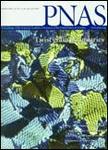版权所有:内蒙古大学图书馆 技术提供:维普资讯• 智图
内蒙古自治区呼和浩特市赛罕区大学西街235号 邮编: 010021

作者机构:Yale Univ Dept Chem New Haven CT 06511 USA Univ Padua Dept Pharmaceut Sci I-35131 Padua Italy Columbia Univ Dept Chem New York NY 10027 USA Sloan Kettering Inst Canc Res New York NY 10021 USA
出 版 物:《PROCEEDINGS OF THE NATIONAL ACADEMY OF SCIENCES OF THE UNITED STATES OF AMERICA》 (美国国家科学院汇刊)
年 卷 期:1999年第96卷第19期
页 面:10643-10648页
核心收录:
基 金:NIGMS NIH HHS [GM21966 R37 GM021966 R01 GM021966] Funding Source: Medline
主 题:氨基糖苷类 抗菌药/化学 抗菌药/代谢 碱基序列 结合 竞争性 DNA/药物作用 DNA结合蛋白质类/代谢 剂量效应关系 药物 电泳 聚丙烯酰氨凝胶 烯二炔类 大肠杆菌/遗传学 真菌蛋白质类/药理学 分子序列数据 核酸构象 寡糖类/化学 寡糖类/代谢 多糖类/化学 多糖类/遗传学 多糖类/药理学 蛋白激酶类/药理学 酿酒酵母蛋白质类 三糖类/化学 三糖类/代谢
摘 要:We report studies of the contribution of DNA structure, holding the sequence constant, to the affinity of calicheamicin gamma(1)(I) and its aryltetrasaccharide moiety for DNA. We used polynucleotide chains as models of known protein-binding sequences [the catabolite activator protein (CAP) consensus sequence, AP-1 and cAMP response element (CRE) sites] in their free and protein-bound forms. The proteins were selected to provide examples in which the minor-groove binding site for the carbohydrate is (CAP) or is not (GCN4) covered by the protein. Additionally, peptides related to the GCN4 and CREB families, which have different bending effects on their DNA-binding sites, were used. We observe that proteins of the CREB class, which induce a tendency to bend toward the minor groove at the center of the site, inhibit drug-cleavage sites located at the center of the free AP-1 or CRE DNA sites. In the case of GCN4, which does not induce DNA bending, there is no effect on calicheamicin cleavage of the CRE site, but we observe a GCN4-induced rearrangement of the cutting pattern in the AP-1 site. This effect may arise from either a subtle local conformational rearrangement not accompanied by bending or a localized reduction in DNA flexibility. Whereas GCN4 binding is not inhibited by the calicheamicin aryltetrasaccharide, binding of CAP to its DNA target is significantly inhibited, and calicheamicin cutting of DNA at the center of the CAP-DNA complex site is strongly reduced by protein binding. This result probably reflects steric inhibition of drug binding by the protein.